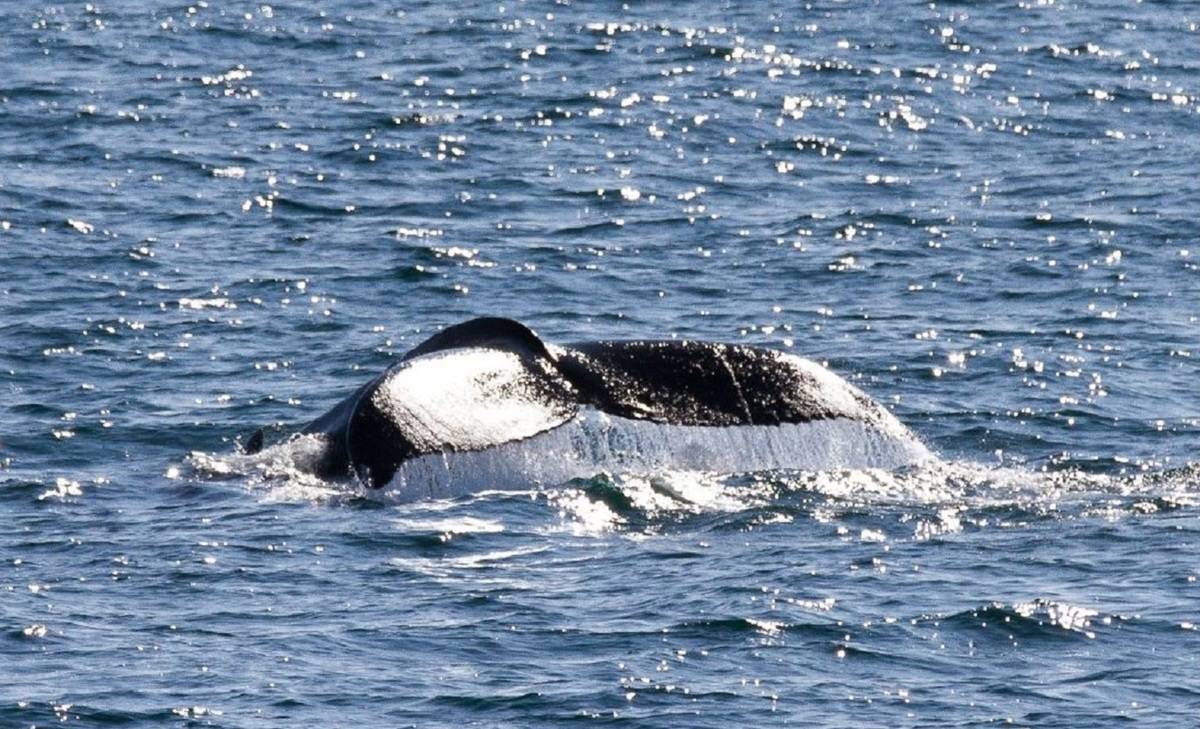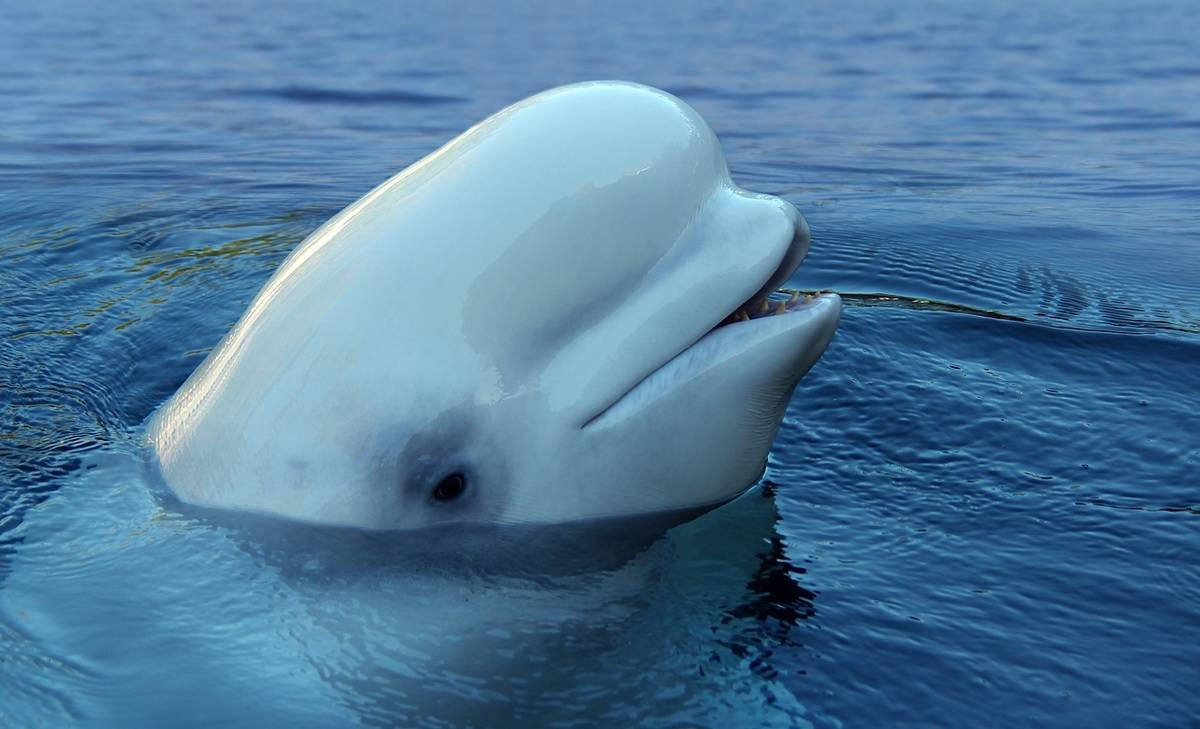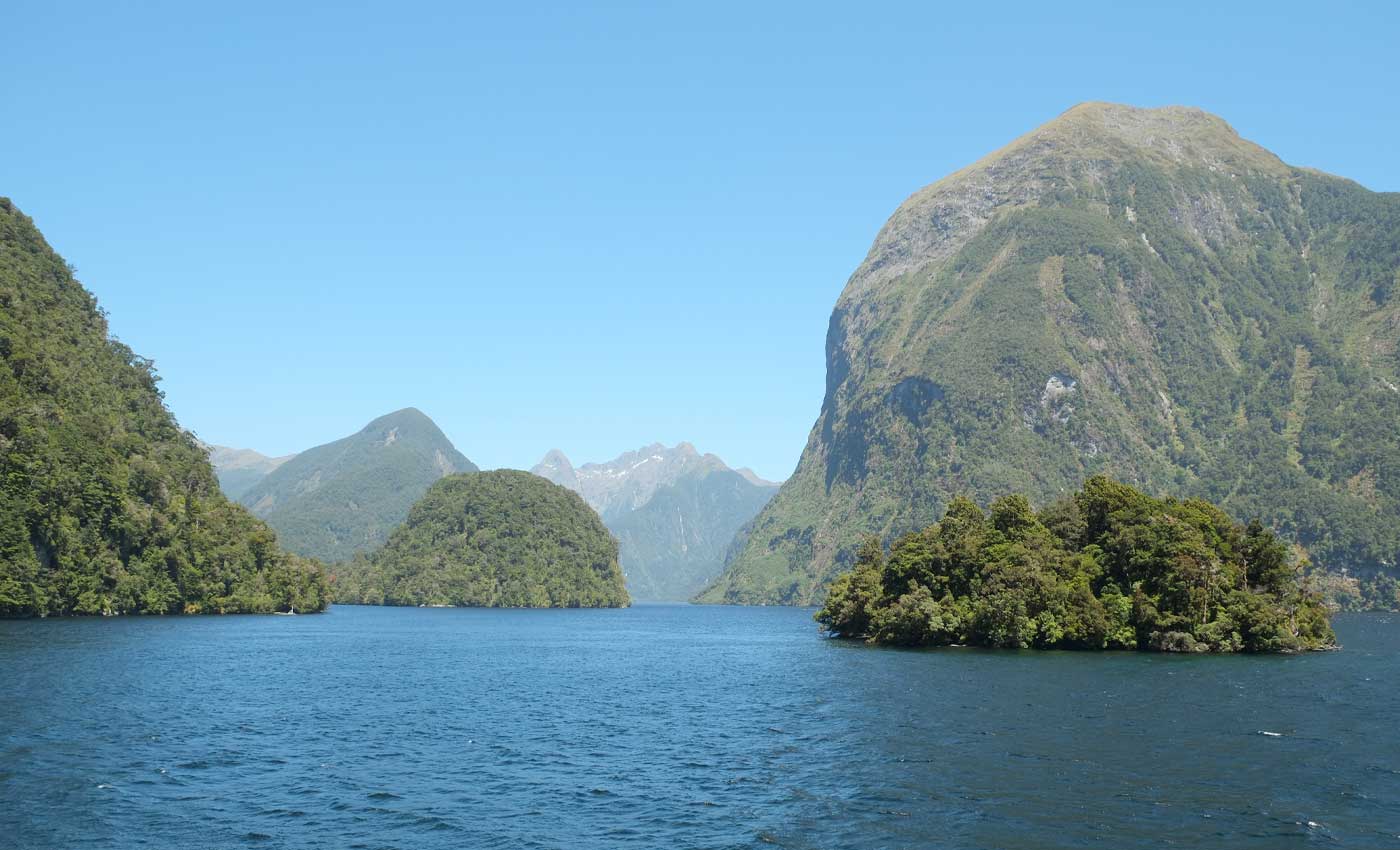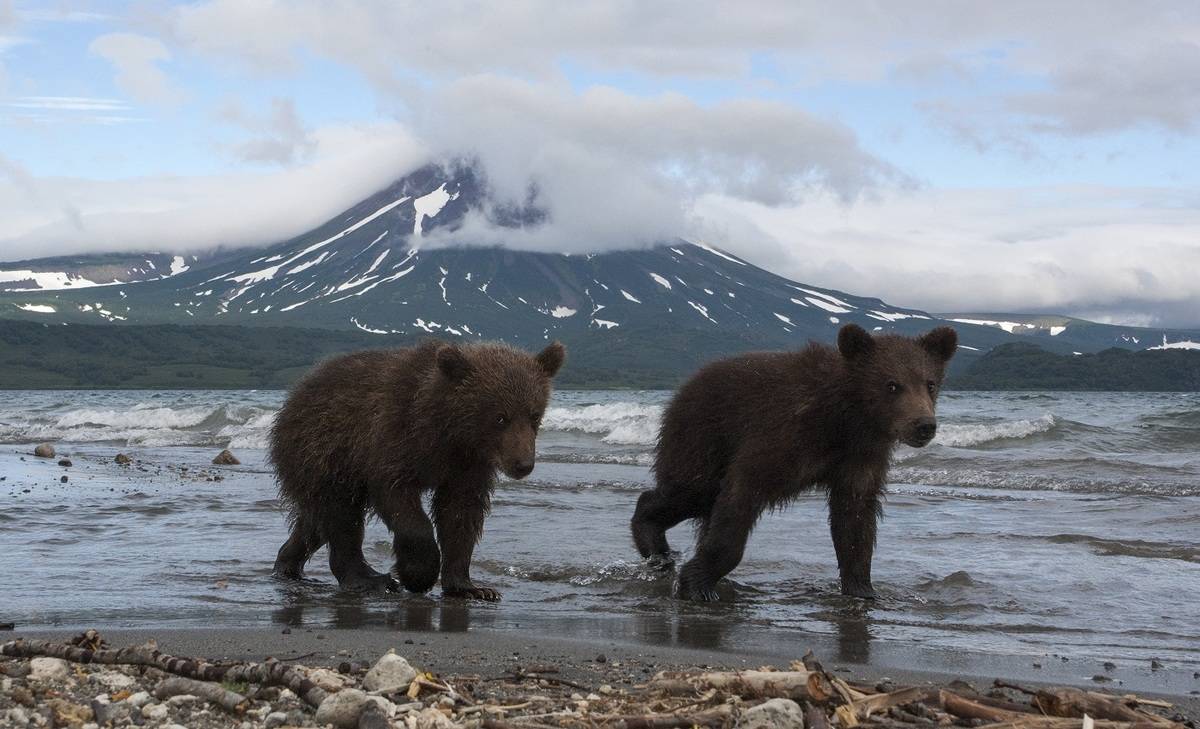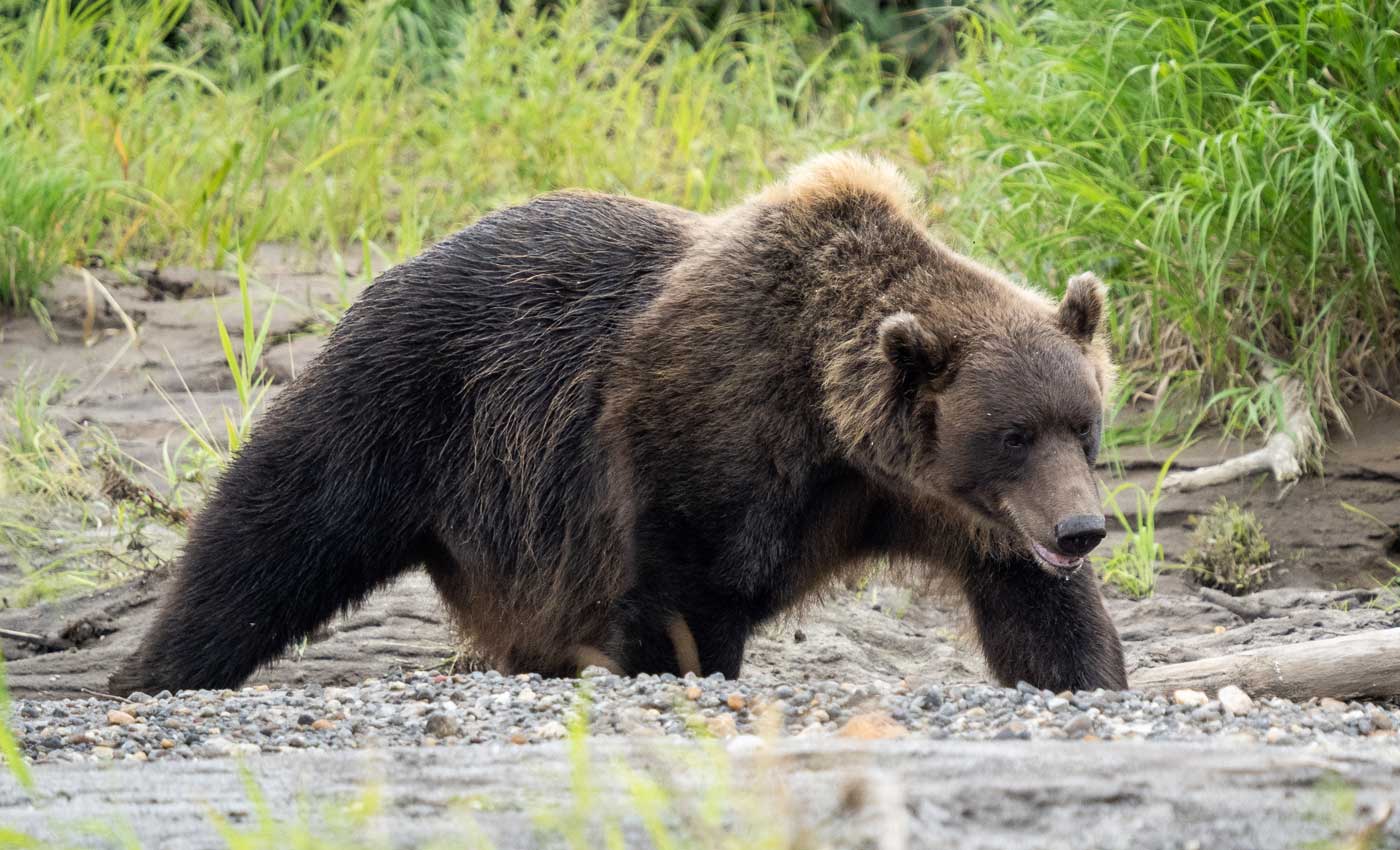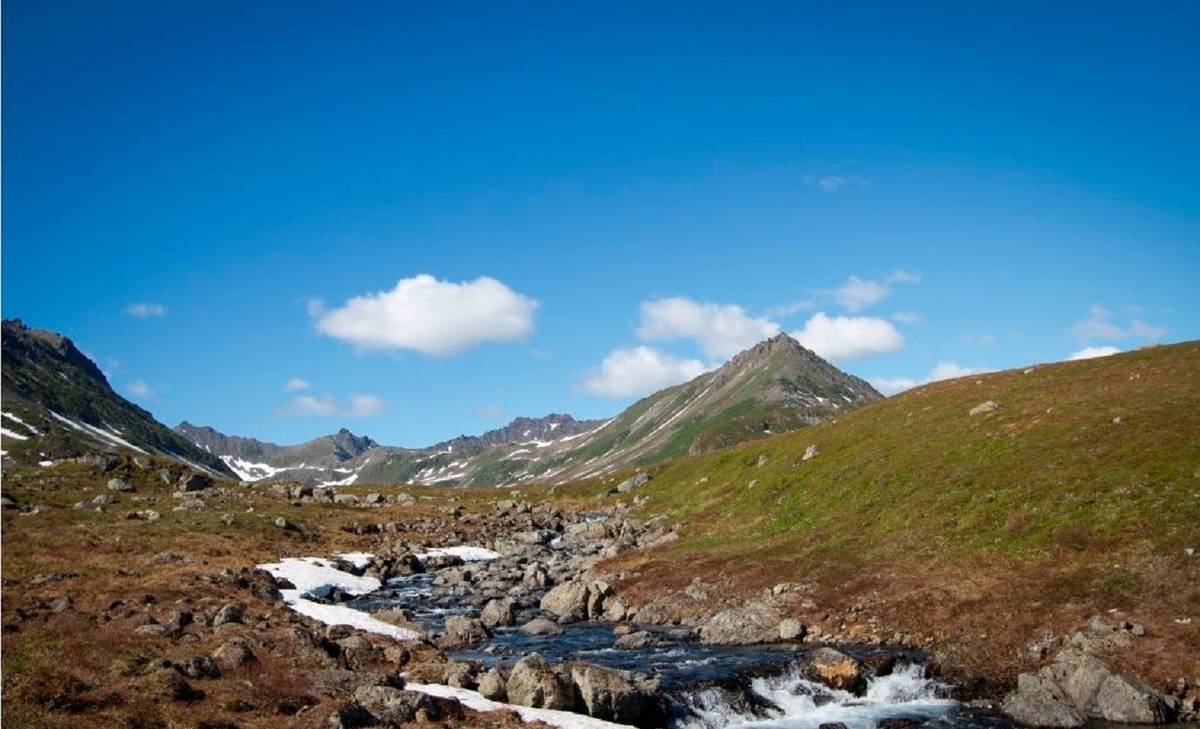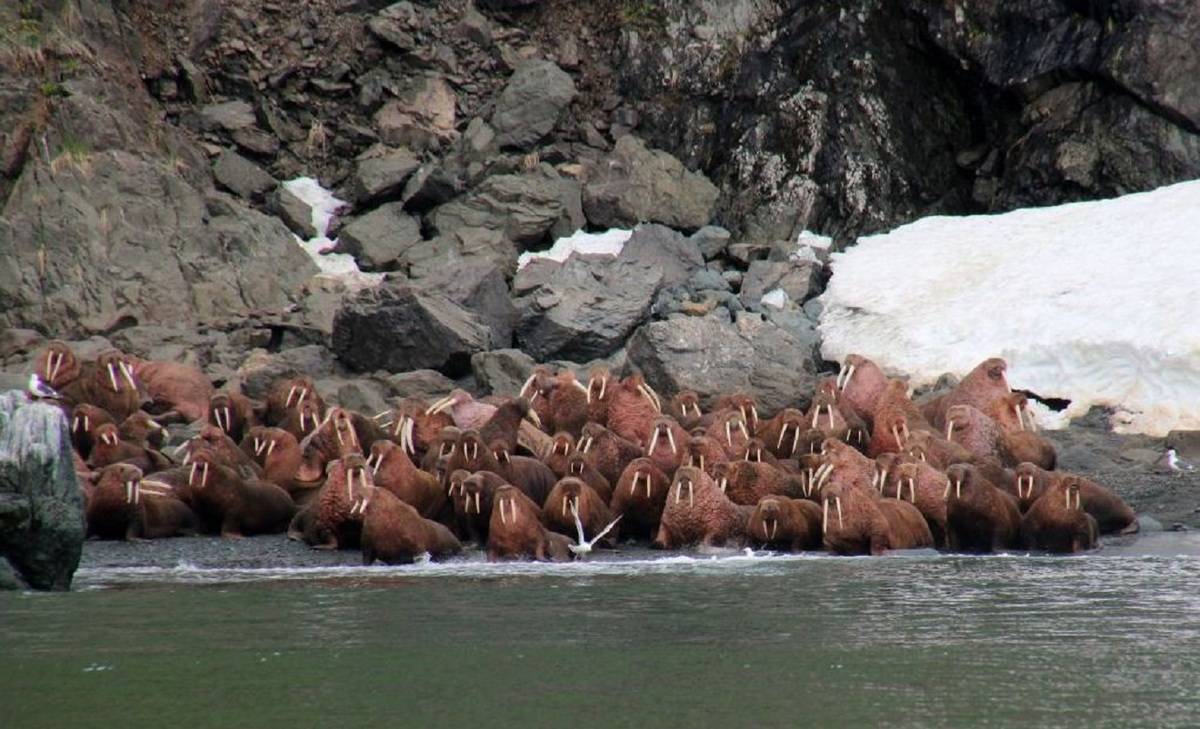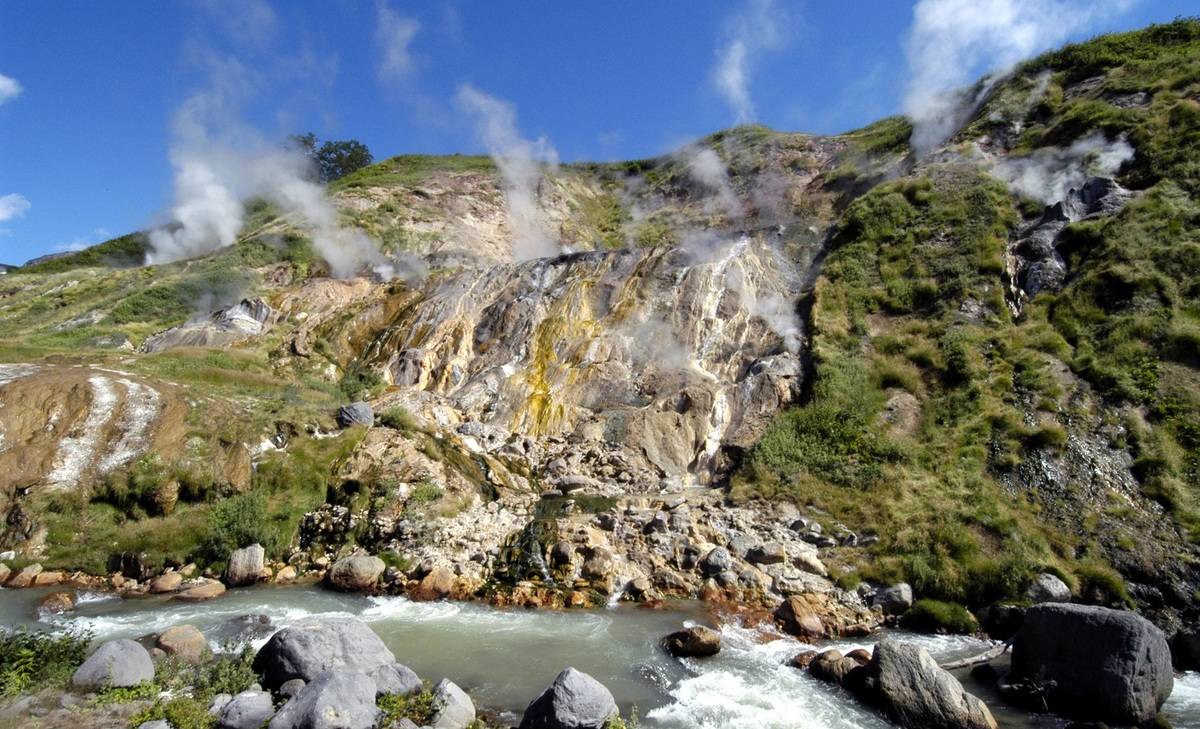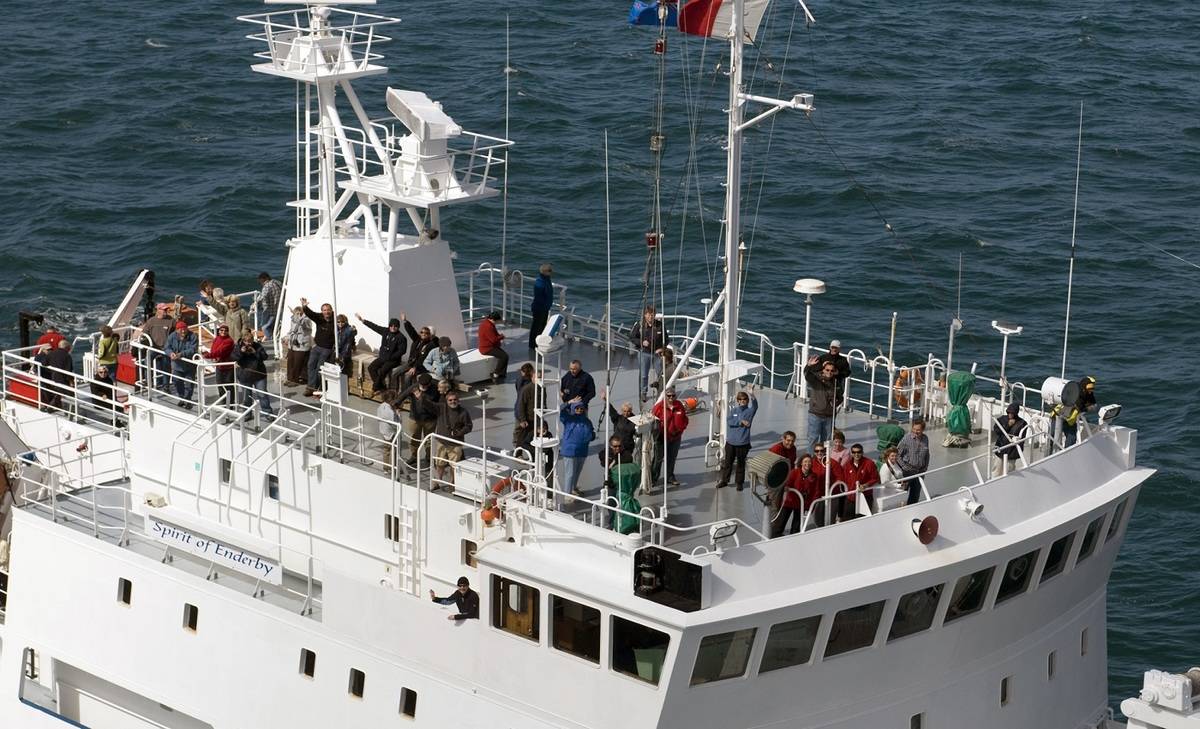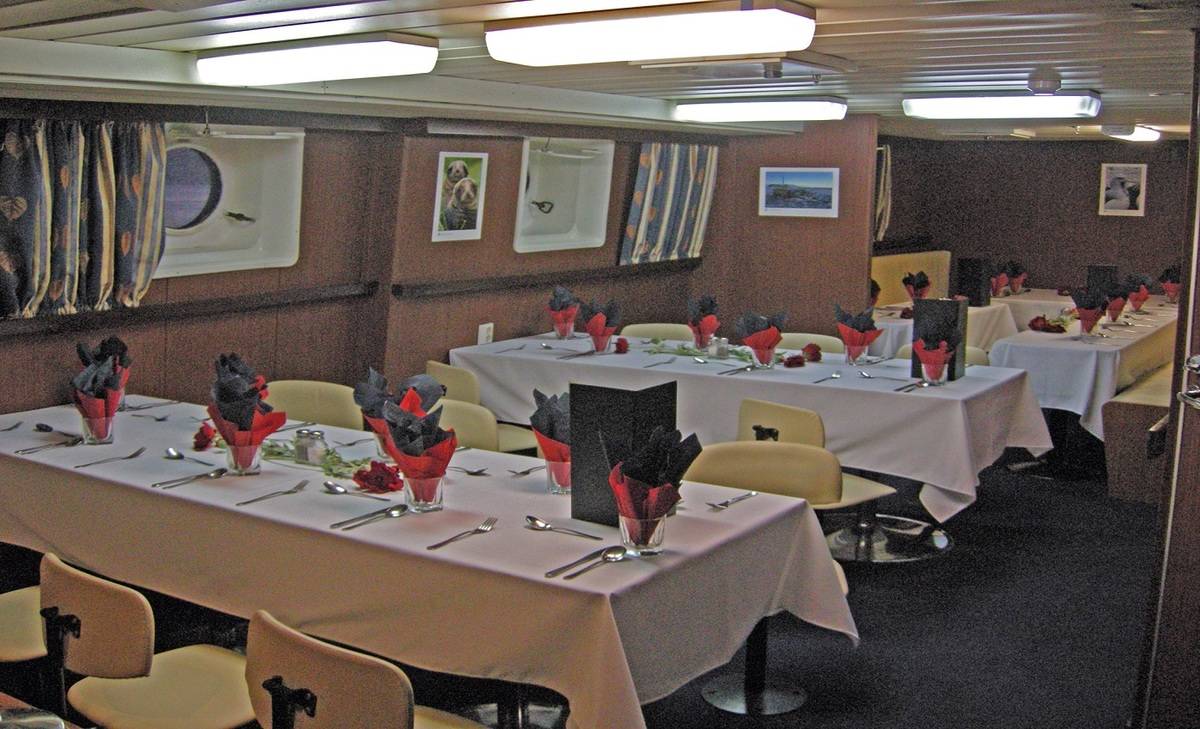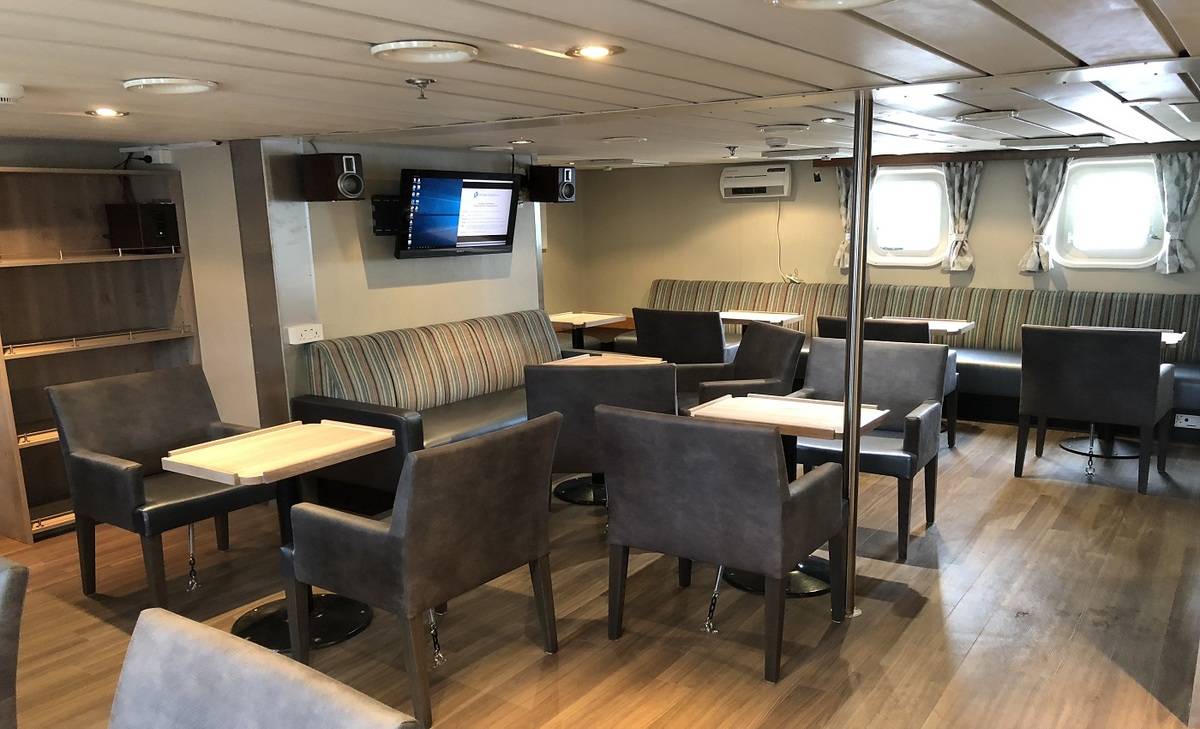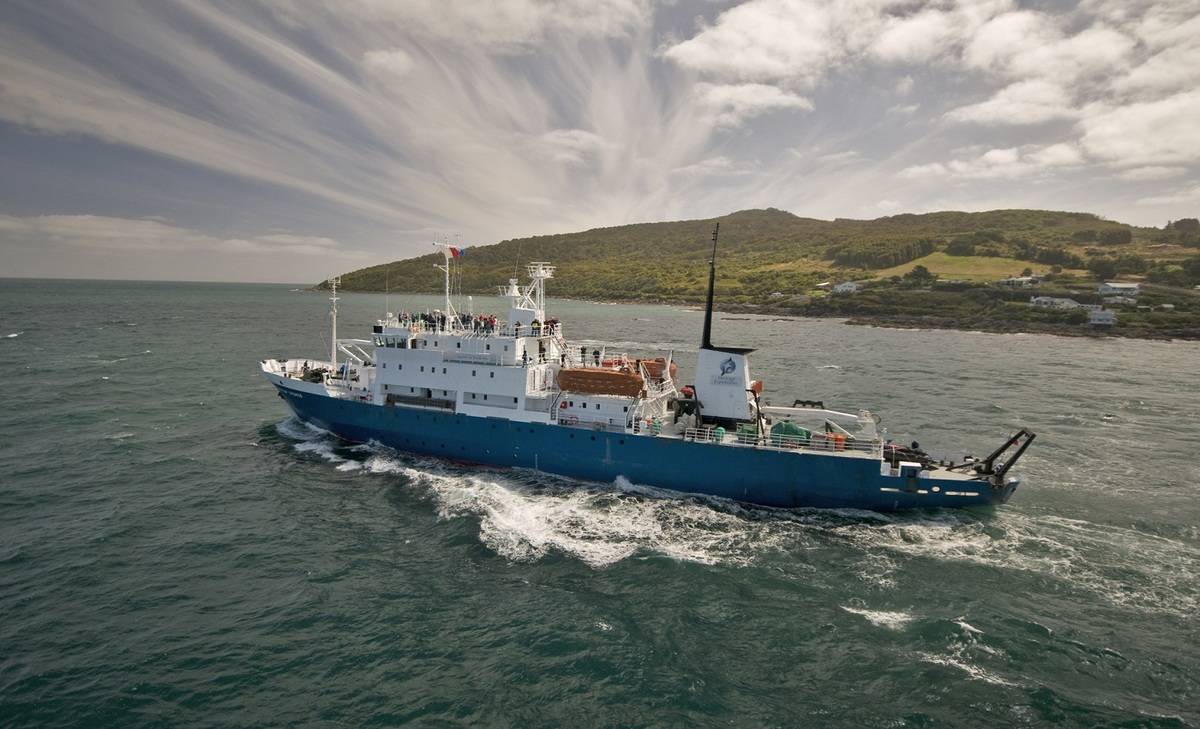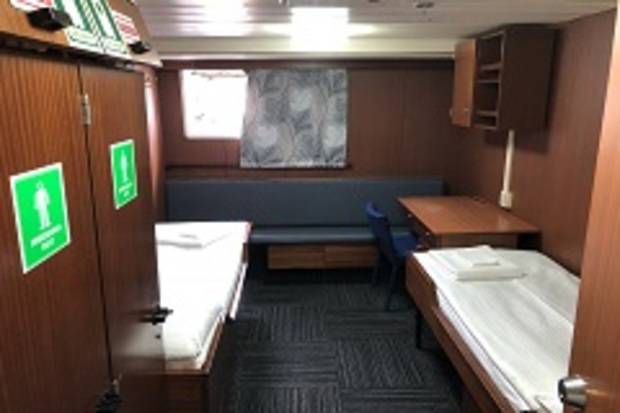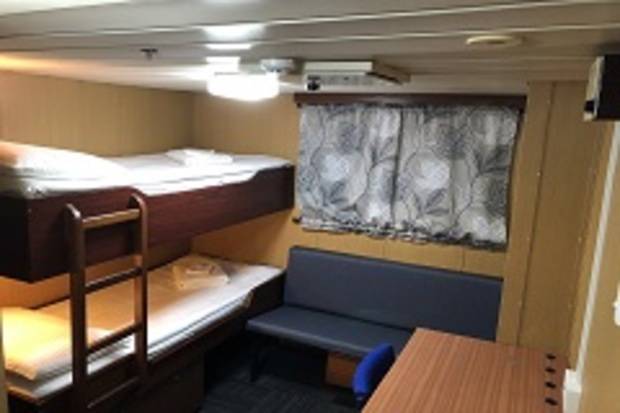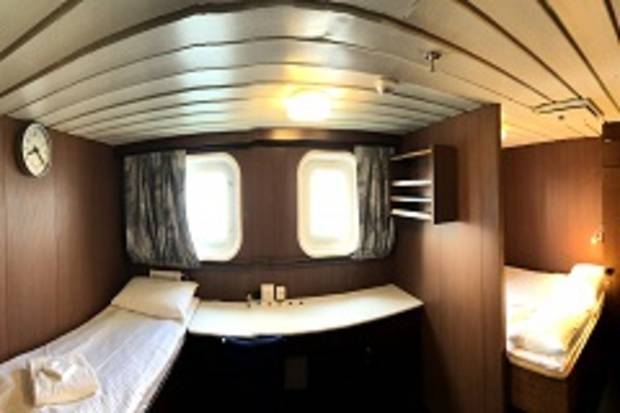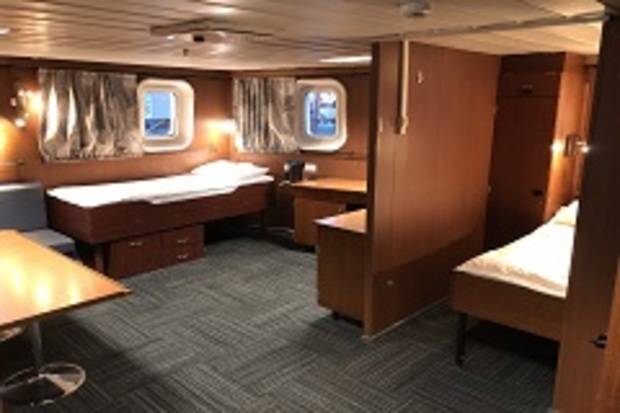Jewel of the Russian Far East 2021
14 Days - Spirit of Enderby
Discover the hidden and isolated eastern seaboard of Russia where wilderness and wildlife are protected as one of its most valuable asset of the region. This 14 day expedition takes you on a journey and witness the perfect autumn colours as we cruise from Anadyr to Petropavlovsk- Kamchatskiy. You'll enjoy the onset of autumn paints vibrant colours on the tundra cloaked hillsides making the landscape a picture perfect postcard offering you the most unique opportunities to capture this perfect moment.

Home » Spirit of Enderby: Jewel of the Russian Far East 2021
Itinerary Highlights
- Visit the amazing museum in Egvekinot
- Hike between fiords and witness the beautiful mountain landscape
- Identify popular marine mammals include Steller Sea lions, Northern Fur Seals, Otters and various species of whales including Gray Minike, Beluga, Bowhead, Blue and Humpback whales.
Itinerary in Brief
- Day 1: Anadyr
- Day 2: Egvekinot
- Day 3: Bukhta Gavrilla
- Day 4: Pika River
- Day 5: Bukhta Natalii
- Day 6: Bukhta Lavrov & Tintikun Lagoon
- Day 7: Bukhta Yuzhnaya Glubokaya and Cape Primetniy
- Day 8: Verkhutova Island and at Sea
- Day 9: At Sea and Commander Bay
- Day 10-11: Commander Islands
- Day 12: Olga Bay and Zhupanova River
- Day 13: Bukhta Russkaya, Kamchatka
- Day 14: Petropavlovsk- Kamchatskiy
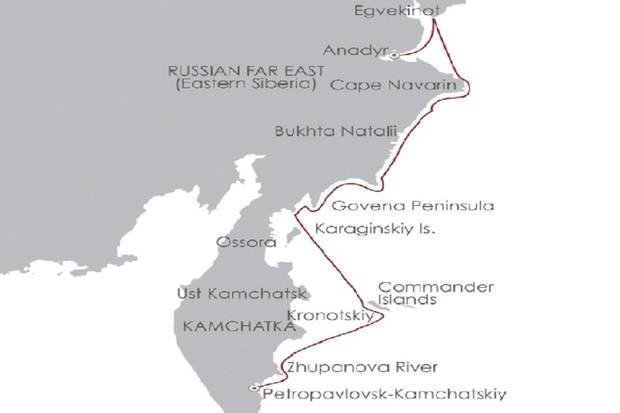
Day 1: Anadyr
Arrive in Anadyr, the administrative centre of the Chukotka region, and transfer to the Spirit of Enderby.
Please note, you can also choose to to depart from Nome, Alaska one day prior. For those, the adventure begins with a flight across the Bering Sea and International Date Line, to the remote port of Anadyr.
Day 2: Egvekinot
There is more to this small town on the shores of Kresta Bay than first meets the eye. It was built by Gulag prisoners in 1946 as a port to supply the Lul’tin mining complex some 200 kilometres inland, the prisoners also constructed the road to the mine. Today the Lul’tin mining complex is closed but the town and Port of Egvekinot is the terminus for a new road through to Pevek and its associated gold mines. The town has an excellent museum which we plan to visit. Egvekinot is only a few miles south of the Arctic Circle and today we will travel by Ural (a 6WD ‘go anywhere’ Russian truck) to the point where the Arctic Circle crosses the road to Lul’tin and then some distance beyond, so you can see and experience the tundra habitat which dominates so much of Chukotka.
Day 3: Bukhta Gavrilla
This coastline is rich in marine mammals and one creature we will be looking for, in particular, is the walrus. As the animals regularly move between locations, finding them can be a matter of luck, although we have had success here in the past. In the afternoon we hope to visit a well-known walrus haul out lying between Meinypil’gyno and Cape Navarin. We also plan a landing in Bukhta Gavriila. The bukhta (or bay) was named after Commander Vitus Bering’s ship, the St Gabriel, from the First Kamchatka Expedition. Behind the expansive beach there is a lagoon we can explore for waterfowl and waders. We may also visit Chukotka’s oldest, and the Arctic’s southernmost, weather station which now sits abandoned. Cape Navarin marks the place where the land bridge to North America began when sea levels were much lower. Because of strong tides around the cape there is an abundance of food here and it is not uncommon to see large numbers of seabirds and good numbers of Gray Whales congregating in the area.
Day 4: Pika River
We start the day with a visit to the delta of Pika River – a well known walrus haul out and one of the
few places in the southern part of the range that still get thousands of animals coming to rest on the beach. During a Zodiac cruise along the river’s cliffs we can expect to see the rowdy spectacle of thousands of nesting Black-legged Kittiwakes, and may also see Harlequin Ducks, Pelagic Cormorants, Common Guillemots and Glaucous Gulls. During previous visits we have encountered Gray Whales so we will be looking for these as well.
Day 5: Bukhta Natalii
Along the Koryak Coast there are many beautiful fiords (bukhtas or bays) and none are more beautiful than Bukhta Natalii. This fiord has two smaller fiords that drain into it from the south –
Bukhta Pavla and Bukhta Petra (named after St Peter and St Paul by Commander Vitus Bering). We plan to cruise to Bukhta Pavla and make a landing. This will be a great opportunity to explore the inland as we hike from one bay to be picked up by the ship in another. The magnificent mountain landscapes and tundra vegetation will surround us, along with the possibility of sighting Snow Sheep, as they are often seen in the area. There is a historic walrus haul out on Bogoslova Island which guards the entrance to these fiords.
Day 6: Bukhta Lavrov & Tintikun Lagoon
Once a thriving settlement built around a fish factory and fur farm, the fiord system of Bukhta Lavrova was abandoned some decades ago after much of the southern Govena Peninsula was declared a state reserve. Now in ruins and reclaimed by nature, this wildlife-rich and rarely visited location is surrounded by jagged peaks and cliffs where waterfalls tumble down valleys, and is home to Kamchatka Brown Bears, Steller’s Sea Eagles and Largha Seals. During our morning Zodiac cruise we expect to enjoy numerous wildlife encounters as we head down to the wreck of a Soviet refrigerator ship, the Krechet (Gyrfalcon), which came to grief on the rocks just off the fish factory in 1978, and explore the remains of the farm and factory. This afternoon we plan to explore one of the region’s most spectacular fiords Tintikun Lagoon. This fiord was blocked by a large terminal moraine during the last period of glaciation. A shallow river surrounded by jagged mountains, glaciers and
forested slopes has breached the moraine, allowing access to one of the most picturesque
locations found anywhere in the world. We take the Zodiacs onto the lagoon and intend to make several landings with Eurasian Nutcracker, Dusky Warbler, Siberian Rubythroat and Siberian Accentor amongst the possibilities. There is also a large population of brown bears and these should be feeding in, and around, the river mouth that drain into the head of the lagoon.
Day 7: Bukhta Yuzhnaya Glubokaya and Cape Primetniy
With an early morning planned, we start the day with a landing on the remote, scenic shores of Bukhta Yuzhnaya Glubokaya near Novoolyutorka on Kamchatka Peninsula’s eastern coast. Landing near the base of a stream that cascades down the mountains in a series of falls and torrents, we will walk through alpine meadows and, at lower elevations, stands of Alder trees as we look for wildlife. Our path upwards will follow the edge of the stream above the trees where panoramic views of the
fiord below can be enjoyed. After lunch we will sail south to Cape Primetniy, a reserve situated on Goveno Peninsula and nicknamed ‘Bear Gully’ due to the number of brown bears we regularly see here. Zodiac cruising along the shores we will be looking for brown bears and, hopefully, observe some females with cubs. We will also look to visit a wrecked fishing boat now housing a breeding colony of Slaty-backed Gulls before taking a walk through the gully to sit on the hillside and admire the rolling landscape surrounded by Stone Pines and abundant birdlife.
Day 8: Verkhutova Island and at Sea
Verkhoturova Island has some huge seabird colonies which we plan to get close to by following a short, but steep trail to the clifftop. We should be able to enjoy some fantastic views of Tufted Puffins, Brunnich’s Guillemots, Pelagic Cormorants and Black-legged Kittiwakes. Both Steller’s Eider and Harlequin Duck occur here too, and we may also see some Steller Sea Lions, as they are often hauled out on offshore rocks.
Day 9: At Sea and Commander Bay
Making our way to the Commander Islands, we take the opportunity to learn more about this archipelago and its fascinating history with a series of lectures. This afternoon we plan to anchor off Bering Island, named after Commander Bering who had the misfortune of discovering this land when his ship was wrecked here in 1741. Exploring Commander Bay, we will walk to the graves of Bering and some of his crew who lost their lives during the long cold winter on this remote land and visit the site where they sought shelter. The reports from those that survived led to a ‘fur rush’ and the settlement of the islands.
Day 10-11: Commander Islands
The Commander Islands consist of two large islands (Bering and Medny) with two smaller islands
Ariy Karmen and Toporkov. These islands are located at the western extremity of the Aleutian chain.
We intend to explore the islands through a combination of landings and Zodiac cruises. Our first stop will be the village of Nikolskoye, where we will visit one of the only museums in the world to display a skeleton of the famed (but now extinct) Steller’s Sea Cow. Birding around the village is also excellent and we should find Rock Sandpiper, Mongolian Plover, Glaucous-winged Gull and Pechora Pipit, with the possibilities on subsequent landings including Rock Ptarmigan, Buff-bellied Pipit and Grey-crowned Rosy Finch. After the village we plan to visit the fur seal rookery at North-West Cape and Zodiac cruise the bird colony at Ariy Kamen.
Day 12: Olga Bay and Zhupanova River
Olga Bay is a part of the very large Kronotskiy Reserve, which also includes the world-famous
Valley of the Geysers. The habitat is quite different to what we will have been experiencing before
with lush Kamchatka forests coming right down to the beach line. There is a possibility we will see brown bears and other forest fauna, as well as multiple bird species that live in this habitat. The seas around Olga Bay are frequented by large numbers of Gray Whales that are usually quite friendly to the visiting boats, if the conditions are right we will take a Zodiac whale-watching cruise. The rising volcanoes in the background here provide a beautiful setting to explore real Kamchatka wilderness. This afternoon we make our way along the Zhupanova River by Zodiac. This journey allows us to explore a river habitat which is common in Kamchatka. The Kamchatka rivers (of which there
are over 1,800) are important ecosystems that support a wide variety of wildlife. They are especially important for salmon spawning – one of Kamchatka’s valuable natural resources. Steller’s Sea Eagles are known to nest in the lower reaches of the river and we are likely to see many young birds as well as a few adults still hanging around their nesting sites. Other birds that breed here will have finished breeding at the time of our visit, but some of them should still be present; there will be waterfowl, gulls and terns, possibly including the Aleutian Tern. There is also the possibility of spotting brown bears, Red Foxes and Musk Rats.
Day 13: Bukhta Russkaya, Kamchatka
If the weather is fine, fantastic views of the many snow-covered volcanoes that dominate the
southern part of the peninsula will greet us as we sail up Bukhta Russkaya. Near the entrance of this isolated fiord, roughly 150 miles north of the southern tip of Kamchatka, there have been sightings of both the Long-billed Murrelet and the endangered Kittlitz’s Murrelet. There is also an excellent chance of seeing Sea Otters, Largha Seals, Steller Sea Lions and Orcas. We plan to make a landing at the head of the fiord where the birding can also be very rewarding with Lanceolated Warbler, Brambling, Common Rosefinch, Oriental Greenfinch and Rustic Bunting among the possibilities. However we will need to exercise care as brown bears are not uncommon in the area. This afternoon, if weather permits, we have arranged a helicopter to transfer you to the huge freshwater volcanic basin that is Kuril Lake, a UNESCO World Heritage Site and reserve in the extreme south of Kamchatka. Home to a bounty of wildlife and one of the largest salmon spawning grounds in Kamchatka, the lake is also famous for the numbers of brown bears which bring their young to feed here. Exploring this wild-rich and remote outpost surrounded by the conical domes of lava islets under the guidance of the reserve’s rangers promises to be a once-in- a-lifetime opportunity.
Day 14: Petropavlovsk- Kamchatskiy
During the night our vessel will enter Avacha Bay, one of the greatest natural harbours in the
world. On the shores of Avacha Bay is Petropavlovsk-Kamchatskiy, the capital and administrative
centre of the Kamchatka Region. The town was founded in the 1700s by Commander Vitus Bering during the Second Kamchatka Expedition. All through the Cold War it was home to a significant part of Russia’s Pacific Fleet which included a large submarine base. The city and region was ‘closed’ to all foreign visitors until 1992. After breakfast you will disembark and we will provide complimentary transfers to a downtown hotel and the airport.To allow time for disembarkation procedures, we do not recommend booking flights before 13:00hrs.
Cabin Details
Main Deck Triple Cabin
One bunk bed (upper and lower bunks), one lower berth, wardrobe, drawers, desk, washbasin and porthole.
Main Deck Cabin
Two lower single beds, wardrobe, drawers, desk, washbasin and porthole.
Superior Cabin
One bunk bed (upper and lower bunks), wardrobe, drawers, desk, private bathroom with shower, toilet and washbasin, and windows.
Superior Plus Cabin
2 lower single beds or double bed with upper single bunk bed (cabin 411), wardrobe, drawers, desk, private bathroom with shower, toilet and washbasin, and windows.
Mini Suite
Separate bedroom with double bed, additional single or sofa bed in lounge area, wardrobe, drawers, desk, private bathroom with shower, toilet and washbasin, and windows.
Heritage Suite
Separate bedroom with double bed, large lounge area with an additional single bed, wardrobe, drawers, desk, private bathroom with shower, toilet and washbasin, and windows.
Spirit of Enderby Deckplan
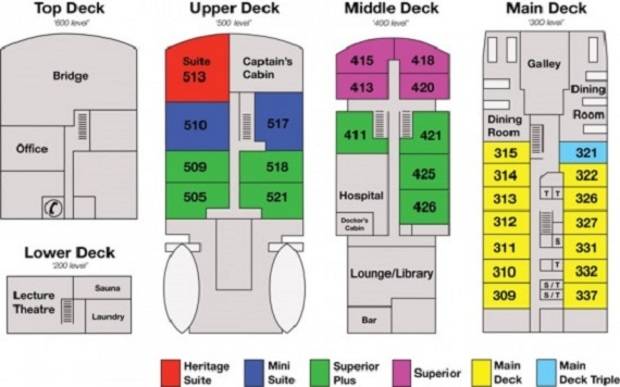
Specifications
- Classification: Russian register KM ice class
- Year built: 1984
- Accommodation: 50 berths expedition
- Shipyard: Finland
- Main engines: Power 2x1560 bhp (2x 1147 kW)
- Register: Russia
- Maximum speed: 12 knots (2 engines)
- Cruising speed: 10 knots (one engine)
- Bunker capacity: 320 tons
Whats included?
- On-board accommodation
- Pre/Post cruise transfers
- Activities/shore excursions as specified
- All meals during the voyage
What’s not included?
- Charter flight Nome-Anadyr - US$1000 per person
- Landing fees - US$500 per person
- International airfares
- Arrival/departure taxes or reciprocity fees, visa fees where application
- Travel insurance
- Gratuities
- Any items not mentioned as included
Notes
*During our voyage, circumstances may make it necessary or desirable to deviate from the proposed itinerary. This can include poor weather and/or opportunities for making unplanned excursions. Your Expedition Leader will keep you fully informed.

